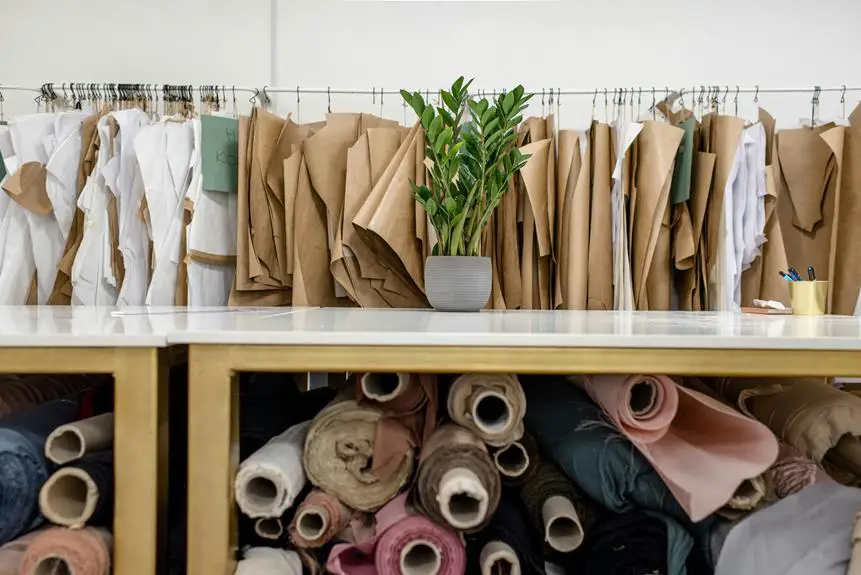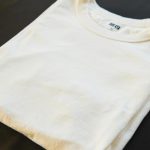You might be wondering how Supima cotton will shape the future of the textile industry, especially as sustainability takes center stage. Its unique qualities and environmentally friendly cultivation practices are catching the eye of discerning consumers. With increasing demand for ethical materials, it's crucial to consider how innovations in production and market trends could influence its trajectory. But what challenges could threaten its growth, and how might the industry adapt? Exploring these questions could provide valuable insights into the evolving landscape of textiles.
Table of Contents
Overview of Supima Cotton
Supima cotton, known for its exceptional quality and softness, is a premium variety of cotton that stands out in the textile industry. You'll notice its superior traits right away; it's longer and stronger than regular cotton, which means it's more durable and resistant to fraying. When you wear Supima cotton, you enjoy a luxurious feel against your skin, making it a popular choice for high-end apparel and home textiles.
Originating from the United States, Supima cotton is grown exclusively in certain regions, ensuring its quality and consistency. You can trust that any product labeled as Supima cotton meets strict standards of purity and quality, as it represents less than 1% of the cotton produced worldwide. This exclusivity contributes to its premium status and makes it a sought-after option for both designers and consumers alike.
When you choose Supima cotton, you're investing in a product that not only looks good but also performs well over time. Its natural breathability and moisture-wicking properties enhance your comfort, making it an ideal choice for everything from t-shirts to bed linens.
Sustainability and Environmental Impact
Often regarded as a more sustainable choice, Supima cotton has a lower environmental impact compared to conventional cotton due to its efficient growing practices and reduced need for pesticides.
When you choose Supima, you're supporting a crop that thrives in the arid conditions of the American Southwest, which requires less water than many other cotton varieties. This efficient water use not only conserves vital resources but also helps maintain the local ecosystem.
Moreover, Supima cotton farmers often employ organic farming methods, minimizing chemical usage and promoting biodiversity. These practices lead to healthier soils and ecosystems, enhancing the overall quality of the land. By opting for Supima, you're directly contributing to sustainable agriculture.
Additionally, the durability of Supima cotton means that products made from it last longer, reducing the frequency of purchases and waste. Instead of contributing to the fast-fashion cycle, you're investing in high-quality textiles that stand the test of time.
Ultimately, your choice of Supima cotton reflects a commitment to sustainability and environmental stewardship, making a positive impact on both the industry and the planet.
Market Trends and Consumer Demand
The growing preference for sustainable materials has significantly boosted the demand for Supima cotton in the textile market. As more consumers prioritize eco-friendly products, brands are responding by incorporating Supima cotton into their offerings. You'll notice this trend in both luxury and everyday apparel, where quality and sustainability go hand in hand.
Here's a snapshot of market trends and consumer demand for Supima cotton:
| Trend | Impact on Demand |
|---|---|
| Rising Eco-Consciousness | Increased demand for sustainable fabrics like Supima cotton. |
| Shift to Quality | Consumers are willing to pay more for premium materials. |
| Online Shopping Growth | Greater access to Supima cotton products through e-commerce. |
| Brand Transparency | Increased demand for brands that disclose sourcing practices. |
These trends indicate that you, as a consumer, are driving a market shift towards high-quality, sustainable textiles. As awareness of environmental issues continues to rise, it's clear that Supima cotton is well-positioned to meet your growing expectations for responsible fashion choices.
Innovations in Supima Cotton Production
Innovations in the production of Supima cotton are enhancing its sustainability and quality, making it an even more attractive choice for eco-conscious consumers like you. These advancements not only improve the textile's appeal but also support environmental stewardship.
Here are some key innovations shaping the future of Supima cotton production:
- Water Management: New irrigation techniques reduce water usage, ensuring that cotton farming is more resource-efficient.
- Genetic Research: Advances in biotechnology are creating stronger, disease-resistant cotton plants, leading to higher yields and less reliance on pesticides.
- Sustainable Farming Practices: Farmers are adopting organic and regenerative agricultural methods, promoting biodiversity and healthier soil.
- Eco-Friendly Processing: Innovations in textile processing, such as using less harmful chemicals and energy-efficient machines, decrease the environmental impact of turning raw cotton into fabric.
These innovations not only make Supima cotton a premium product but also align with your values as a responsible consumer.
Future Challenges and Opportunities
As the demand for Supima cotton continues to grow, the industry faces both challenges and opportunities in balancing quality production with sustainable practices.
You'll need to navigate issues like water scarcity and climate change, which can impact cotton cultivation. Adopting innovative irrigation techniques and sustainable farming methods can mitigate these challenges, but it'll require investment and education.
On the opportunity side, you can tap into the rising consumer awareness around sustainable textiles. By promoting the eco-friendly aspects of Supima cotton, you can attract a growing segment of environmentally conscious shoppers. This shift in consumer preference opens doors for brands to differentiate themselves in a crowded market.
Collaboration with farmers and suppliers can also strengthen quality control and ensure that your production remains consistent. Engaging in research and development can lead to more resilient cotton varieties, which can withstand environmental stresses.
Ultimately, while challenges are inevitable, they also pave the way for new ideas and partnerships. By embracing sustainability and innovation, you can secure a competitive edge and contribute to a more responsible textile industry.
The future of Supima cotton can be bright, but it's up to you to seize these opportunities.
Frequently Asked Questions
What Is the History of Supima Cotton's Development?
You'll find Supima cotton's development began in the 1950s, when American farmers aimed to cultivate a high-quality cotton variety. Its superior strength and softness quickly gained popularity, setting it apart from standard cotton.
How Does Supima Cotton Compare to Regular Cotton in Terms of Quality?
When you compare Supima cotton to regular cotton, you'll notice Supima's superior softness, strength, and color retention. Its longer fibers provide enhanced durability, making it a premium choice for high-quality textiles and apparel.
Can Supima Cotton Be Blended With Other Fibers?
Yes, you can blend Supima cotton with other fibers like polyester or spandex. This combination enhances durability and stretch while maintaining the softness and luxurious feel that Supima cotton is known for.
What Countries Are the Largest Producers of Supima Cotton?
The largest producers of Supima cotton are primarily the United States, particularly California, and some regions in Australia. You'll find these countries leading in quality and quantity, making them key players in the Supima market.
Are There Specific Certifications for Supima Cotton Products?
Yes, there are specific certifications for Supima cotton products. You'll find the Supima label on high-quality items, ensuring they meet strict standards for fiber quality and sustainability, guaranteeing you're choosing the best cotton available.
- Tetron Fabric for Marine Applications: Durability and Use Cases - June 18, 2025
- Tetron Fabric for Outdoor Furniture: Weather Resistance and Care - June 18, 2025
- Tetron Fabric for Wall Coverings: Style and Application Tips - June 18, 2025







